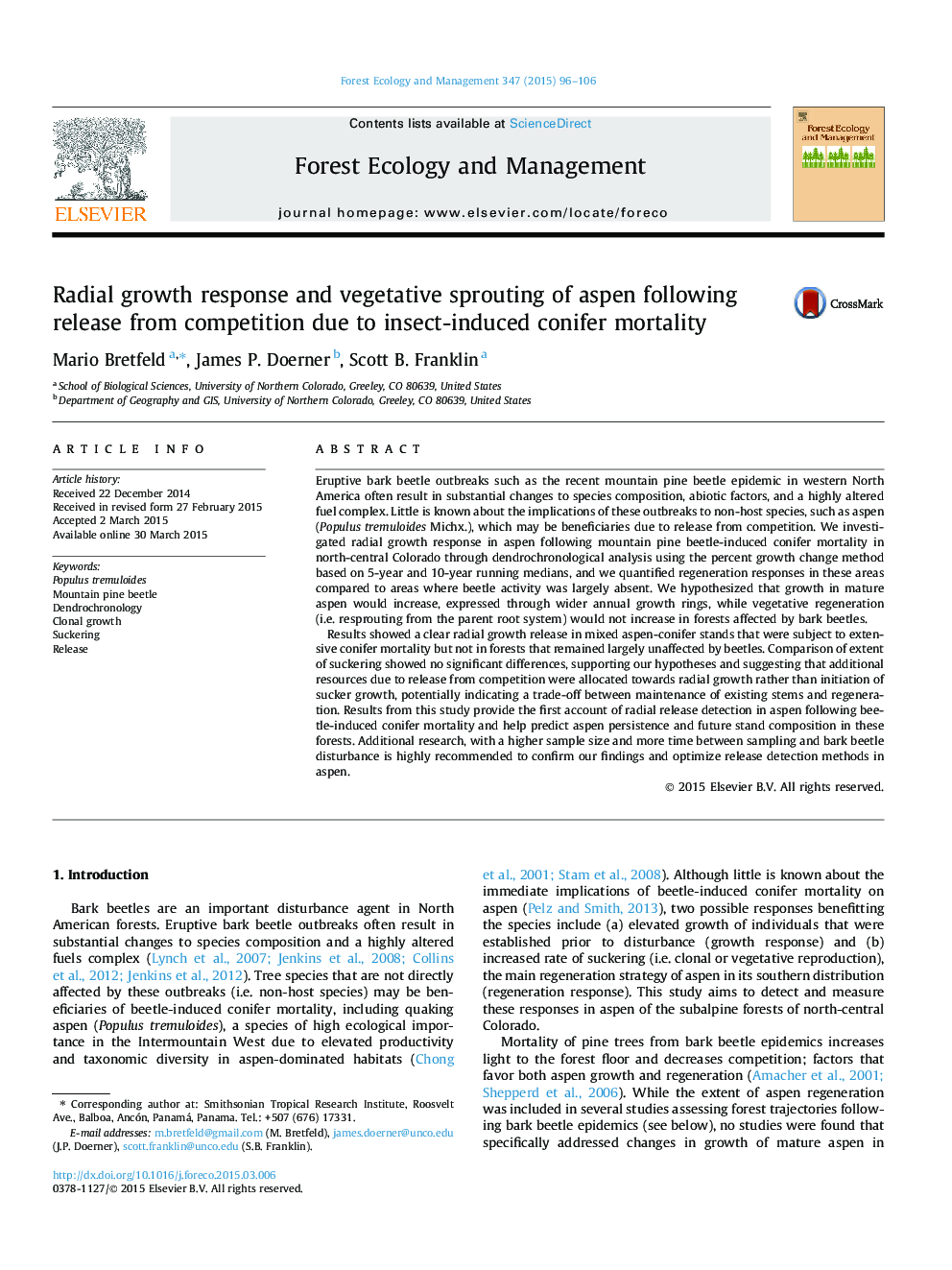| کد مقاله | کد نشریه | سال انتشار | مقاله انگلیسی | نسخه تمام متن |
|---|---|---|---|---|
| 86248 | 159174 | 2015 | 11 صفحه PDF | دانلود رایگان |
• Little is known about the response of aspen to beetle-induced conifer mortality.
• We compared radial growth and sucker establishment of aspen in affected areas.
• Aspen showed increased radial growth but no additional suckering post disturbance.
• We suggest sustained apical dominance as a main factor for lack of suckering.
Eruptive bark beetle outbreaks such as the recent mountain pine beetle epidemic in western North America often result in substantial changes to species composition, abiotic factors, and a highly altered fuel complex. Little is known about the implications of these outbreaks to non-host species, such as aspen (Populus tremuloides Michx.), which may be beneficiaries due to release from competition. We investigated radial growth response in aspen following mountain pine beetle-induced conifer mortality in north-central Colorado through dendrochronological analysis using the percent growth change method based on 5-year and 10-year running medians, and we quantified regeneration responses in these areas compared to areas where beetle activity was largely absent. We hypothesized that growth in mature aspen would increase, expressed through wider annual growth rings, while vegetative regeneration (i.e. resprouting from the parent root system) would not increase in forests affected by bark beetles.Results showed a clear radial growth release in mixed aspen-conifer stands that were subject to extensive conifer mortality but not in forests that remained largely unaffected by beetles. Comparison of extent of suckering showed no significant differences, supporting our hypotheses and suggesting that additional resources due to release from competition were allocated towards radial growth rather than initiation of sucker growth, potentially indicating a trade-off between maintenance of existing stems and regeneration. Results from this study provide the first account of radial release detection in aspen following beetle-induced conifer mortality and help predict aspen persistence and future stand composition in these forests. Additional research, with a higher sample size and more time between sampling and bark beetle disturbance is highly recommended to confirm our findings and optimize release detection methods in aspen.
Journal: Forest Ecology and Management - Volume 347, 1 July 2015, Pages 96–106
